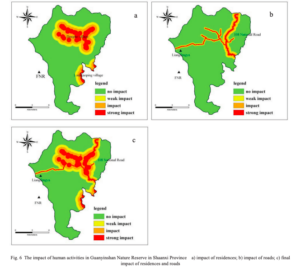
Hi Everyone! My name is Eliza Richardson, and I am a senior majoring in Environmental Science and International Studies, from Lakewood, Ohio. I love to cook, workout, and spend time outdoors doing anything from hiking to sand volleyball to laying on the beach 🙂 I am excited for this class because I have always wanted to grow my GIS skills, and I think it would be very beneficial for me moving forward in my career after graduation. After graduation I plan on taking a gap year before attending a masters program for environmental policy and sustainable development!
Schuurmans Chapter 1- Introduction to GIS exemplified how versatile and important GIS can be in the academic, research, and professional world. One of the great things about GIS is that it can be used for such a wide array of topics, that it can serve almost any field of study. Schuurman points out that a significant distinction of GIS is that it is more about “spatial analysis” as opposed to simply “mapping”. Categorizing this kind of work as spatial analysis allows us to think more externally about how we want to be expressing certain kinds of information and data, and how to most effectively. However, Schuurman explains how GIS wasn’t always so interdisciplinary. At the beginning of its development, many people argued about what was the proper use of the technology – should it be used by those who are looking to analyze spatial data, or should it be used by those who are looking to print physical maps? I also thought it was interesting how Schuurman talks about how the development of GIS is important for both social and technological developments. With all of these varying views on the implication of GIS in the world, I think that this is one of the reasons why I am interested in learning more about GIS; it is so versatile in every field, and can be used in more ways than one would ever picture.
The concept of GIScience is really interesting to me. Often times, when I have struggled with creating material in GIS before, I feel as though the reason why I had struggled was because I didnt completely understand the concept of what each step was doing with my data, therefore I didnt comprehend how to connect it all together, and know what step to take next. I think that if GIScience was briefly touched on when learning about this system and the projects we will be doing, I think it would help people to better understand why they are performing the functions they are in GIS, and will help them apply their knowledge to future projects.
In looking at GIS applications, I looked at the correlation of giant panda populations and the amount of deforestation and human impact in areas of giant panda habitat in Central and Western China. I found that GIS can be used to map anything from the density of mammal populations, to the suitability of habitat for giant pandas, to the areas of the region that are experiencing the greatest effects of human activity such as the building of roads through dense forests. Figure 6 from GIS application in evaluating the potential habitat of giant pandas in Guanyinshan Nature Reserve, Shaanxi Province, shows the level of human impact from residence, to roads on a nature reserve for giant pandas in the Shaanxi Province.

Let me know if the GIScience stuff (primarily the Mitchell) book helps with understanding how to use GIS technology (the Getting to Know book). It is a massive amount of functionality that does require some level of more abstract understanding. Hopefully this class gets that balance right.